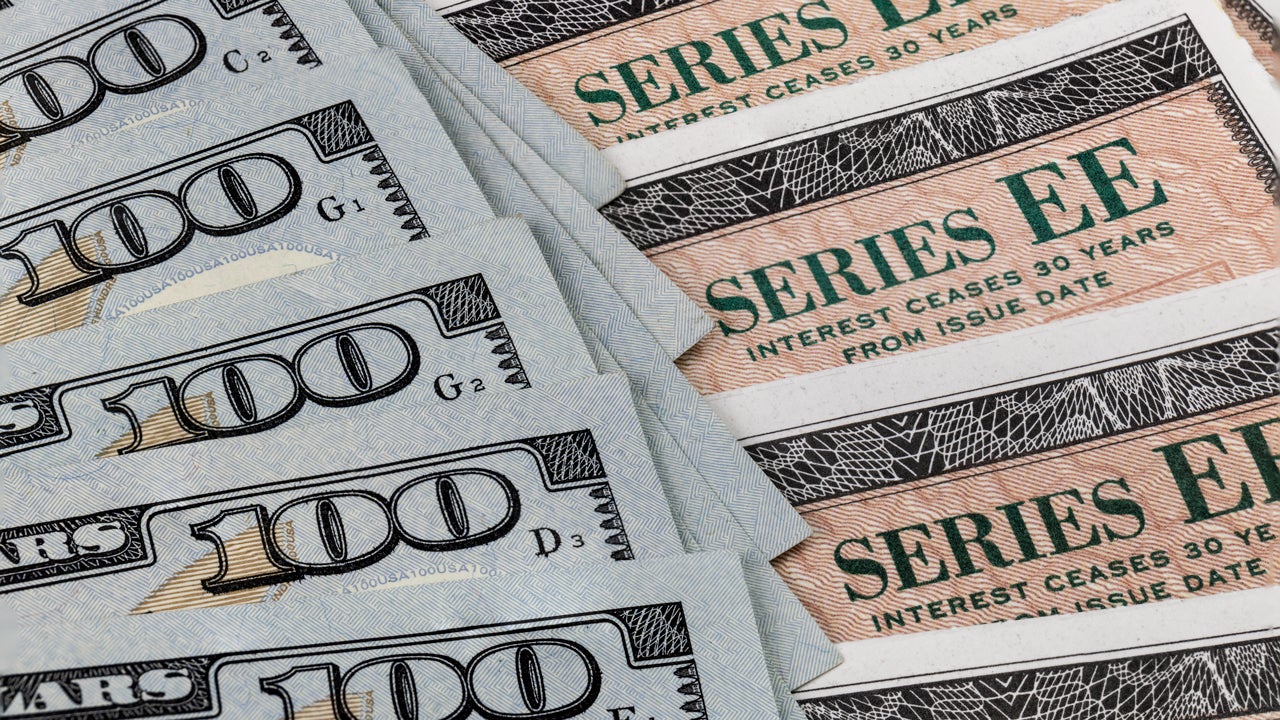Step-up CDs: What they are and how they work

Key Takeaways
- Step-up CDs come with a calendar of predetermined rate increases that will boost your yield throughout the term.
- Step-up CDs have guaranteed rate increases, while bump-up CDs come with the potential for a rate increase if rates go up.
- Step-up CDs are relatively rare offerings, and while you can find them at select banks, rates tend to be much lower than traditional CDs and high-yield savings accounts.
If you’re worried about the risk of loss when investing your money, you may be a good candidate for a certificate of deposit (CDs). CDs offer a fixed interest rate and often the protection of Federal Deposit Insurance Corp. (FDIC) insurance, or National Credit Union Administration (NCUA) insurance, in the case of credit unions — both of which can soothe your jitters.
When you invest in a traditional CD, you agree to tie up your savings for months or years at a time with a rate that is set in stone when you open the account. With a step-up CD, however, you’re getting something that can feel even more appealing: a promise from the bank that the rate is going to increase.
That promise certainly sounds great, but it doesn’t mean step-up CDs are the best choice for you. Read on to learn how step-up CDs work, how their yields compare with other low-risk savings products and whether they’re worth adding to your portfolio.
What is a step-up CD?
Like traditional CDs, a step-up CD is a deposit account that allows savers to lock in an interest rate for a set period of time without worrying about any variability (as you will have with savings and money market accounts). Before the step-up CD matures, however, the interest rate associated with the account increases a predetermined amount on scheduled dates.
For example, a step-up CD might start with a 0.3 percent interest rate and increase by 0.1 percent annual percentage yield (APY) every six months for two years. The rates over time would be:
- First six months: 0.3 percent APY
- Next six months: 0.4 percent APY
- Next six months: 0.5 percent APY
- Final six months: 0.6 percent APY
Early withdrawal penalties still apply with step-up CDs, which means you’ll pay a price for pulling the money out of your account before it matures.
Step-up CDs are offered by fewer banks than traditional CDs are.
How step-up CDs work
Step-up CDs are sometimes referred to as bump-up CDs. But in reality, they’re two different products.
Bump-up CDs give account holders the option to raise their APY at least once before the end of their term, upon request. For example, as of this writing, Ally Bank offers 2-year and 4-year bump-up CDs that offer the ability to ask for an increase if the bank’s rates go up – one request with the 2-year bump-up CD and two requests with the 4-year bump-up CD. However, the rate increase is only available if the bank begins offering better rates.
With step-up CDs, on the other hand, predefined rate increases happen automatically at certain intervals, says Greg McBride, CFA, Bankrate’s chief financial analyst. With a bump-up CD, you might be concerned about timing your rate increase perfectly, which is when a step-up CD could be a better option.
Step-up CD features
Here are the distinguishing features of step-up CDs that can help you determine whether it’s a fit for your deposits.
- Lower initial interest rate: Step-up CDs start with an initial rate that’s usually lower than the fixed rate on a comparable traditional CD. To see how much you’d earn overall, factoring in rate increases, look at the blended interest rate.
- Predetermined rate increases: The rates for a step-up CD aren’t left up in the air, as with a bump-up CD. They’re predetermined, and the account holder is informed of when and by how much the rate will increase during the term.
- Minimum opening deposit: Step-up CDs tend to have higher minimum deposits to open than other types of accounts, such as savings accounts. They tend to range between $1,000 to $2,500. That’s not always the case, though — at TD Bank, for example, the minimum opening deposit is only $250 (as of September 18, 2024).
- Term options: Step-up CDs may have fewer term options than traditional CDs, as they’re a specialty product. In most cases, the available terms will be at least one year, giving enough time for the rate increases.
- Early withdrawal penalties: Like most CDs, step-up CDs will usually have penalties for early withdrawal of any of the funds. You may have to forfeit a certain number of months’ worth of interest, depending on how long the CD term is for.
Beware the blended yield
When you’re comparing step-up CD rates, be sure to look out for blended APYs. A blended APY is not simply what you’re earning at each interval, but rather is the effective rate you’re earning on the CD balance that factors in the rate increases.
U.S. Bank, for instance, offers a 28-month step-up CD. The interest rate tied to the CD increases every seven months:
- First seven months: 0.05 percent APY
- Next seven months: 0.25 percent APY
- Next seven months: 0.45 percent APY
- Final seven months: 0.65 percent APY
- (APYs as of September 17, 2024)
But the blended annual yield, or the effective rate of the four intervals listed above, is 0.35 percent APY. So, if you don’t incur any penalties from withdrawing money before the maturity, 0.35 percent APY is the yield you’d receive.
Often with step-up CD deals, comparable offers for traditional CDs are much more appealing.
Alternatives to step-up CDs
A step-up CD may seem like a good fit if you want a fixed rate of return that you’re certain will increase over time. But it’s not your only option. As you compare places to park your money, consider these alternative accounts and strategies:
Build a CD ladder: If CDs are a good fit for your portfolio, and you’re concerned about declining rates, consider building a CD ladder. You’ll deposit funds into multiple CDs at the same time with different terms. When the shorter-term CDs mature, renew them or replace them with new ones. At the same time, you’ll have longer-term CDs in the mix that may pay a higher yield than the shorter-term ones.
Look at no-penalty CDs: No-penalty CDs won’t offer a rate increase, but they also won’t charge you an early withdrawal penalty if you need the money earlier than expected or you find a better option with a higher yield.
Open a high-yield savings account or a money market account: The best high-yield savings accounts and money market accounts offer competitive rates of return, and they conveniently allow you to withdraw money without penalty (although there may be restrictions on the number of transactions). While rates on both types of accounts are variable – meaning they can go up or down at any time – you’ll likely find significantly higher earning potential with these savings products at online banks than you will with a step-up CD.
Bottom line
Step-up CDs present an attractive option for those who want to capitalize on interest rate increases over the CD term without the need to actively monitor their investments. While the rate increases can be a perk, it’s also important to factor in interest rate trends.
“Like umbrellas on a rainy day, bump-up and step-up CDs tend to appear and appeal most in a rising interest rate environment,” Bankrate’s McBride says.
A guaranteed rate of return plus a guarantee to boost that rate even higher can sound like great news, but the blended yield of a step-up CD might be much lower than traditional CDs or other deposit accounts. Be sure to compare all your options before committing to a term.
— Bankrate’s René Bennett and freelancer David McMillin contributed to an update of this story.







